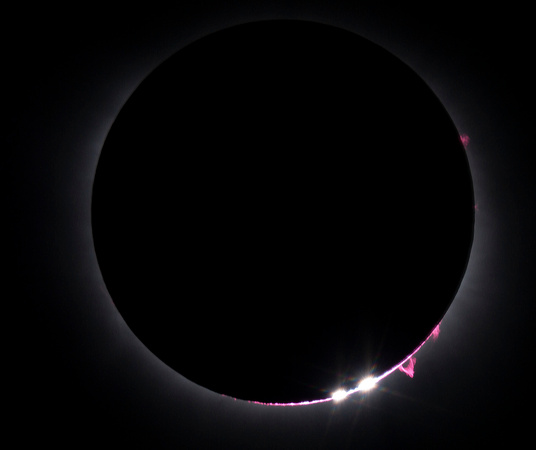Third Contact, 2024
This single frame was shot at 1/2000", a fraction of a second after totality ended. You can see the bright spots of the Sun shining through low places on the Moon's craggy disk, known as Baily's Beads after the astronomer who first described and explained them in 1836. You can also make out several prominences, including the one at lower right that was clearly visible to the naked eye during totality. The red rim visible around part of the circumference is the chromosphere, hydrogen which is considerably less dense than the bright photosphere under it, so that it is only visible during an eclipse. A bit of the corona is still visible. Paragould, Arkansas, from the Super 8 parking lot.


